Stellar Students
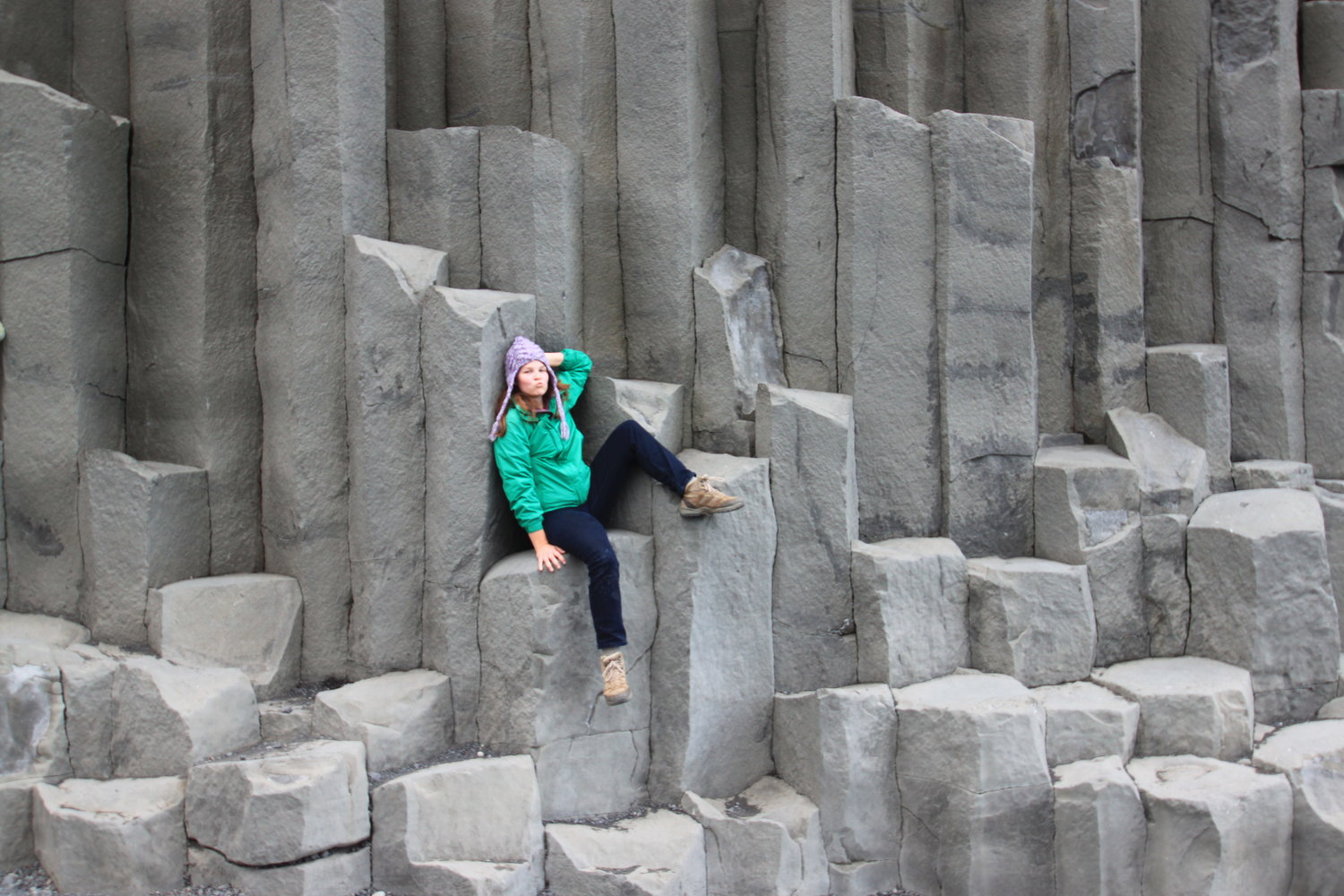
LSU geology student Abigail Heath strikes a pose on the hexagonal basalt columns on
a beach in Southern Ireland.
Experiences Abroad
Last summer, Abigail Heath, Allyson Morthland, Kathryn Cahalan and Lydia Jagetic joined the more than 300,000 U.S. students who left the comforts of home to embark on a study abroad experience.
Heath, a junior geology major, spent seven weeks in Iceland as part of the Iceland Renewable Energy, Technology and Resource Economics program through the School for International Training (SIT), which offers nearly 80 programs in more than 30 countries worldwide. While in Iceland, Heath took three 3-credit hour courses: Renewable Resource Technology and Economics, Intro to Icelandic Language and Culture, and a research course where she conducted an independent research project that proposed a solution to an invasive plant species.
“Iceland is a small island with little vegetation. Because of this, it is quickly 'desertifying' (turning to desert). However, in the 1950s, the Alaskan lupine, a plant that thrives in Northern climates, was imported and planted throughout the countryside to try to slow this process. It did so well that it became an invasive species, which Icelanders are not very happy with,” Heath said. “Through my individual research project, I proposed that Iceland use these invasive plants as biofuel to completely eliminate their dependence on fossil fuels for energy, which is actually completely within their reach!”
Morthland and Cahalan, mathematics majors in LSU’s GeauxTeach Math and Science program, spent three weeks of their summer vacation as interns at the Martin-Luther-Schule, a public high school in Marburg, Germany, for grades five through 13. The Martin-Luther-Schule has more than 15 years experience in project-based teaching where the classroom activity shifts from teacher-centered instruction to student-centered projects, and Morthland and Cahalan were there to observe and learn more about this alternative to traditional teaching.
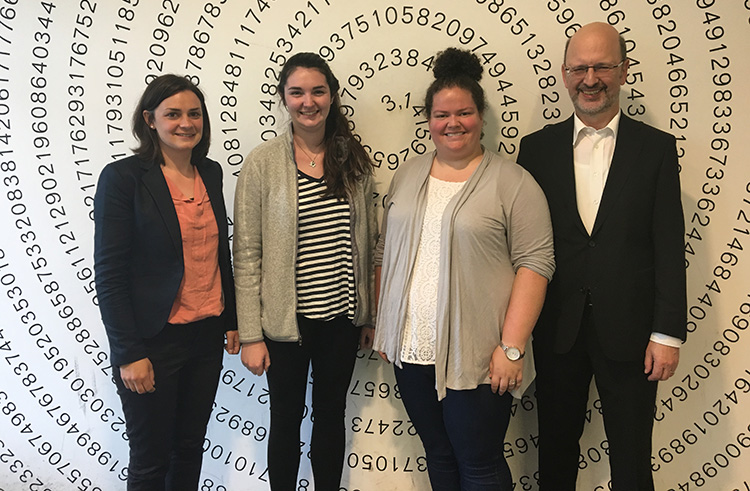
Mathematikum staff with GeauxTeach students Kathryn Cahalan and Allyson Morthland
(center).Photo Credit: Allison Morthland
While in Germany, Morthland and Cahalan visited the Mathematikum, a science museum located in Giessen, Germany, that offers a variety of unique hands-on exhibits to teach mathematics principles in a fun and exciting way.
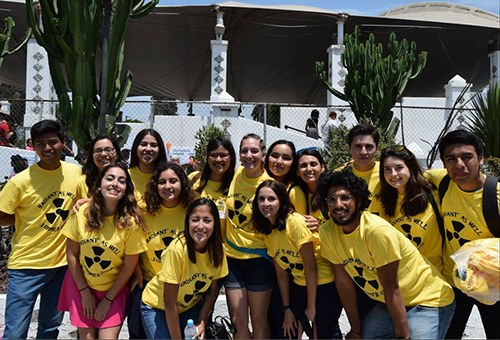
Members of "It's a Rad World: Radiation in Medicine" club at the end of a whirlwind
week. Lydia Jagetic is pictured in the center of the group..Photo Credit: Lydia Jagetic
“We totally math 'nerded' out in the museum,” Cahalan said. “The Mathematikum allowed me to actually see the principles that we learned in class, and that was very cool.”
Jagetic, a medical physics PhD student at LSU, combined her passions for research, teaching and travel as she volunteered to teach a week-long intensive course for high school and college students in Mexico on the uses of radiation in medicine. The course was organized by Clubes de Ciencia, a non-profit organization whose mission is to inspire and mentor the future generation of scientists and innovators in Ensenada, Mexico.
“My main motivation for teaching this topic was to spread a greater awareness of the fact that radiation isn’t always something to be afraid of. Radiation is all around us. When used correctly, radiation can do some pretty incredible things to help a lot of people. In order to impart this appreciation for radiation to my students, I focused on the medical uses of radiation such as imaging procedures including x-rays, CT scans and MRI, and radiotherapy practices to treat cancer and other diseases.”
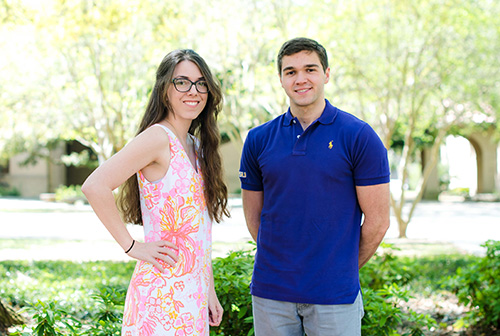 Physics Students Named ASF Scholars
Physics Students Named ASF Scholars
LSU physics majors Amy LeBleu and Harvey Shows were among the top performing scholars to receive the 2016 Astronaut Scholarship Foundation award.
The ASF Award was created by the six surviving astronauts of Mercury 7, the team of
seven astronauts that piloted the manned spaceflights of the Mercury program from
May 1961 to 1963. The scholarship aims to encourage students to pursue scientific
endeavors that keep the U.S. on the leading edge of technology.d
LeBleu, an astronomy and biochemistry double major with a minor in psychology, has contributed to a number of astrophysics projects, including work in the laboratory of LSU Ball Family Distinguished Professor in Physics & Astronomy Geoffrey Clayton. Her work focused on researching SN2007oc, a type II supernova, and the methods to model the amount of dust produced in the explosion. This project was funded by the Sloan Digital Sky Survey. She also helped develop a program to determine if R Corona Borealis (RCB) [stars], a peculiar low-mass yellow supergiant star, can be found only from their spectrum. The program would also be able to scan the Sloan Digital Sky Survey catalog to find more RCB stars.
Shows also has an extensive research background. Last summer, he conducted neutrino physics research at Indiana University. He also participated in a quantum computing physics research experience sponsored by the National Science Foundation’s Robert Noyce Teacher Scholarship through the LSU GeauxTeach program in Math & Science. Shows has also worked as an undergraduate researcher in Assistant Professor of Physics Kristina Launey’s research group where his work focused on nuclear structure theory.
Retired United States Air Force Colonel and NASA astronaut Fred Gregory visited campus to present Shows and LeBleu with the scholarship during a presentation and luncheon held March 17.
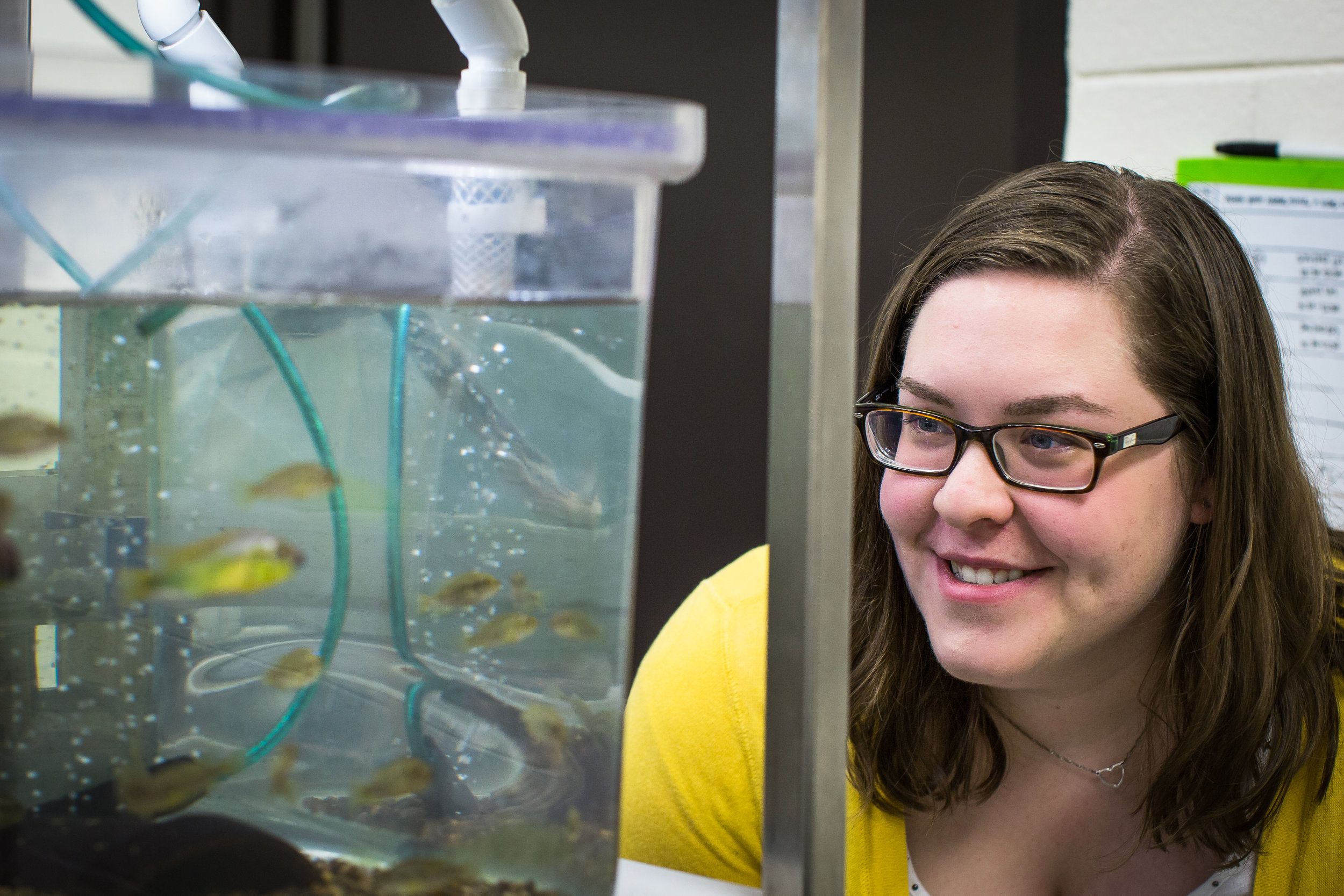
A Tale of Two Fishes
In November, Julie Butler, a PhD student in the Department of Biological Sciences at LSU, stood in front of a packed auditorium in the Digital Media Center and fascinated the audience with a story about her research on the impact of man-made noises on fish behavior, reproduction, and acoustic communication – in three minutes flat. Julie came in first place out of nine finalists in the Three Minute Thesis competition (3MT) hosted by the LSU Graduate School. She won a prize of $1,000 and represented LSU at the Southern regional 3MT competition in March.